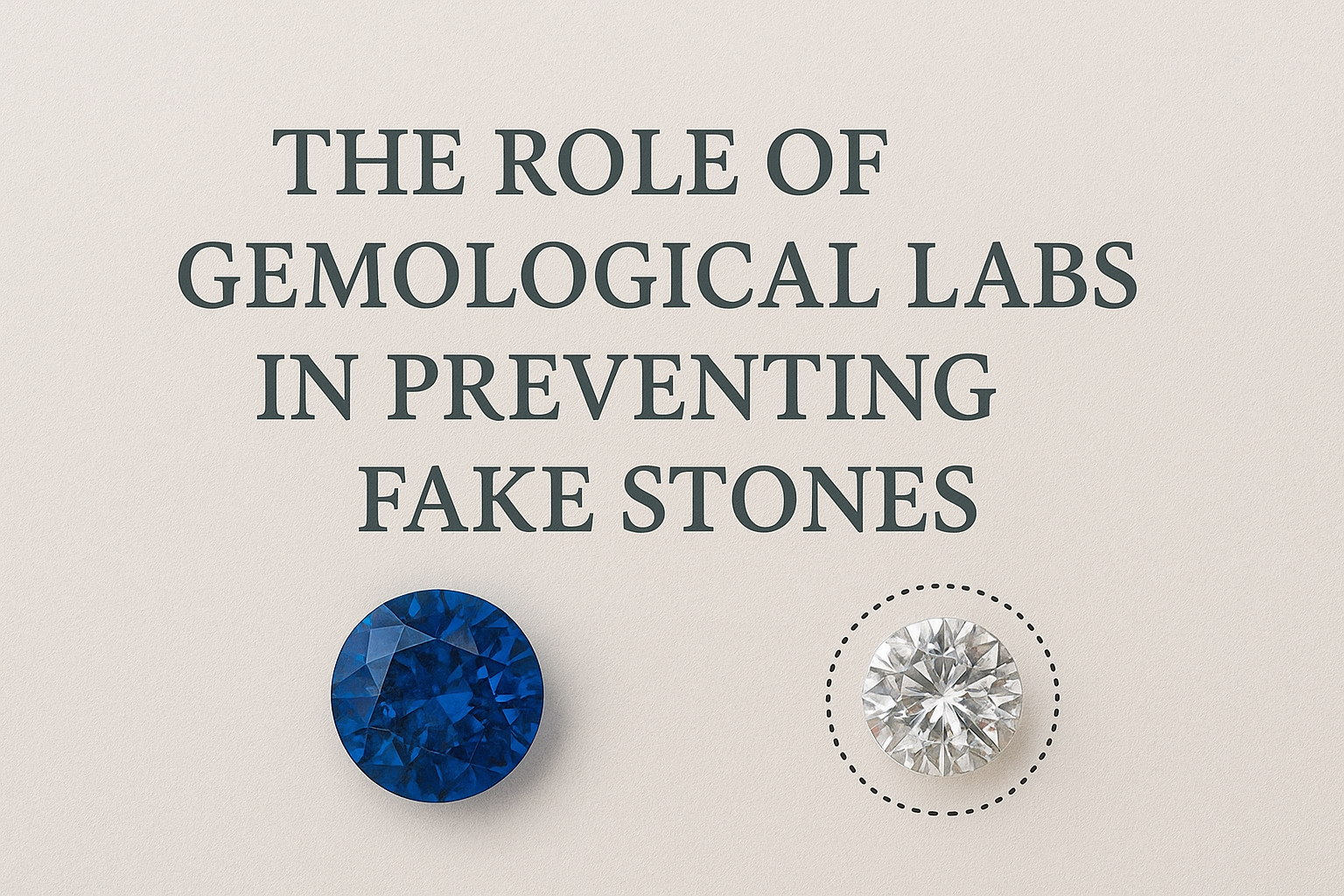In today’s gemstone market, counterfeit and treated stones are more common than ever. From synthetic rubies to glass-filled sapphires, spotting the difference between real and fake gems can be almost impossible – even for experienced buyers.
That’s where gemological laboratories come in. These labs act as the guardians of gemstone authenticity, using advanced technology and scientific expertise to ensure that every stone sold in the market is genuine, ethically sourced, and correctly valued.
Let’s uncover how these labs protect both the industry and buyers from fake stones.
Table of Contents
🔍 1. Why Gem Testing Is So Important Today
The global gemstone trade is worth billions of dollars, and unfortunately, that makes it a target for fraud.
Unscrupulous sellers often sell:
- Synthetic stones (lab-created versions of natural gems)
- Treated stones (color or clarity enhanced using heat, glass, or radiation)
- Imitations (colored glass or cubic zirconia passed off as gems)
Without professional testing, these can easily pass as real – causing buyers to lose thousands of dollars.
That’s why gemological certification is no longer optional – it’s essential.
🧪 2. What Are Gemological Labs?
Gemological laboratories are specialized facilities equipped with high-end instruments and expert gemologists who analyze and verify gemstones.
They use advanced science – not guesswork – to determine a gem’s:
- Origin (natural or synthetic)
- Treatment status (heated, glass-filled, etc.)
- Gem species and variety (e.g., sapphire, spinel, topaz)
- Quality grades (color, clarity, cut, carat)
Each tested gem receives a Gemstone Identification Report or Certificate of Authenticity, confirming that it’s real and describing its properties in detail.

⚙️ 3. How Labs Detect Fake or Treated Stones
Modern gem labs use state-of-the-art equipment to reveal what the naked eye can’t see.
Common tools include:
- 🔬 Microscopes – To identify inclusions and internal structures unique to natural stones.
- 🌈 Spectrometers – To study light absorption and identify gem types.
- 💡 UV Fluorescence Tests – To spot synthetic growth patterns.
- 🔥 Infrared & Raman Spectroscopy – To detect heat or chemical treatments.
- 🧭 Refractometers & Polariscope Tests – To confirm refractive index and optical character.
These tests help distinguish natural gems from lab-grown or imitation stones with high accuracy.
📜 4. The Certification Process: Step-by-Step
Here’s how a typical gem verification happens at a lab:
- Submission: The gemstone is submitted securely to the lab.
- Initial Inspection: Experts perform a visual check for obvious treatments.
- Scientific Testing: Instruments are used to analyze the stone’s physical and optical properties.
- Verification: Findings are compared with reference data from international gem databases.
- Report Generation: A unique, tamper-proof gem certificate is issued, complete with serial number, gem photo, and QR code for online verification.
🧾 5. How Gem Reports Protect Buyers
A certified gemstone gives you:
✅ Authenticity assurance – You know the stone is genuine and untreated.
✅ Transparency – Every property (origin, cut, clarity) is clearly stated.
✅ Resale value – Certified gems are easier to sell and insure.
✅ Buyer confidence – You’re protected from fraud or misrepresentation.
In fact, many luxury jewelers and investors won’t buy a gemstone without a lab report.
🌍 6. Recognized Gemological Labs Worldwide
When buying gemstones, always look for certification from recognized international labs, such as:
- GIA (Gemological Institute of America)
- IGI (International Gemological Institute)
- Gubelin Gem Lab (Switzerland)
- SSEF (Swiss Gemmological Institute)
- GJEPC/GemLab (India)
- AGL (American Gemological Laboratories)
These labs follow strict scientific standards and are trusted globally by gem traders, jewelers, and collectors.
🚫 7. Beware of Fake or Local “Certificates”
Not all certificates are genuine. Some unrecognized labs issue printed “certificates” that hold no value – and may even misclassify stones intentionally.
✅ Always check:
- The lab’s credibility (GIA, IGI, GJEPC, etc.)
- QR code or online verification link on the report
- Matching details between the stone and the certificate
If it’s from a local or unknown lab without online verification – think twice before buying.
💎 8. The Future of Gemstone Authentication
The world of gemology is evolving fast.
Labs are now using:
- AI-based identification systems to detect synthetic inclusions
- Blockchain technology to trace gemstone origins from mine to market
- Digital certificates linked to NFTs for tamper-proof verification
These innovations will make gemstone fraud nearly impossible in the future – ensuring buyers can invest with full confidence.
🧠 Conclusion: Gem Labs Are the Gatekeepers of Truth
In an industry full of brilliance and deception, gemological laboratories are the true gatekeepers of authenticity.
They blend science, integrity, and technology to protect both buyers and brands – ensuring that every gemstone that reaches the market is as genuine as nature intended.
So, before you buy your next gem, ask the most important question:
“Is it lab-certified?”
Because in the world of gemstones, a certificate isn’t just paper – it’s proof of trust.